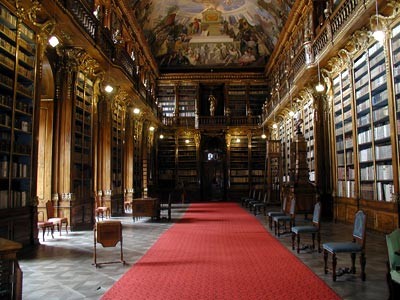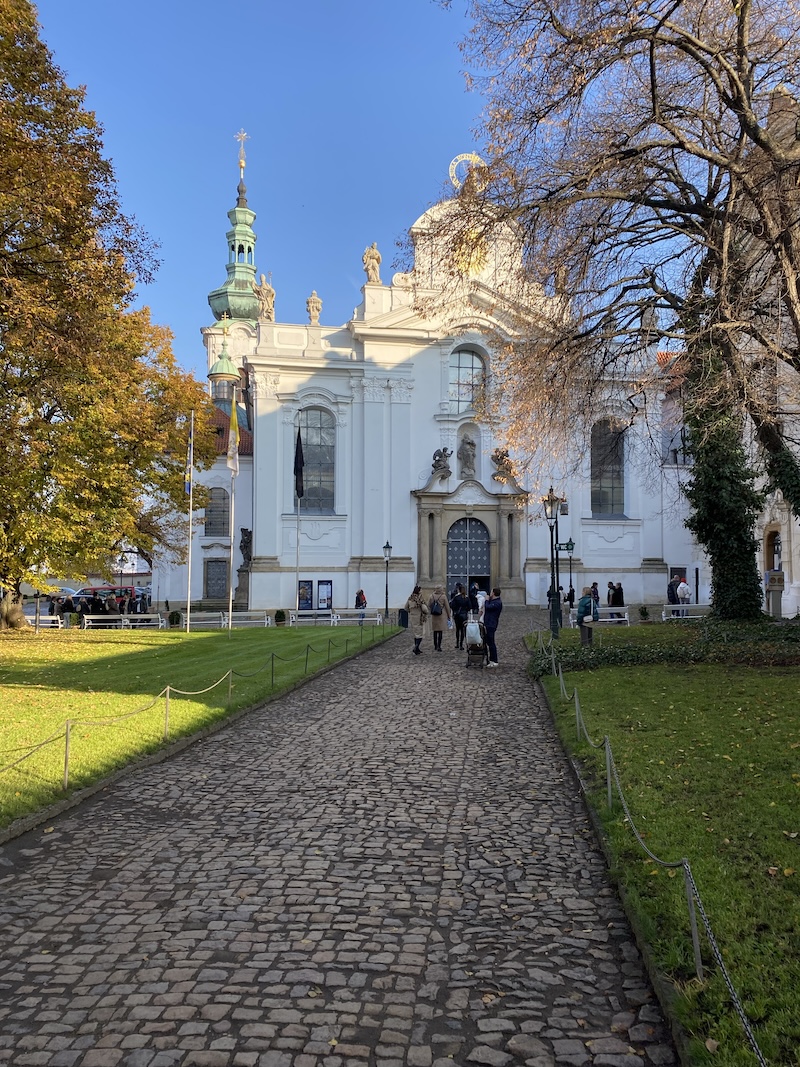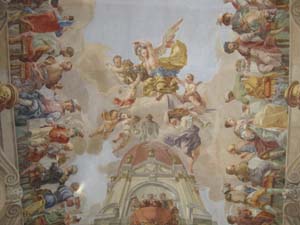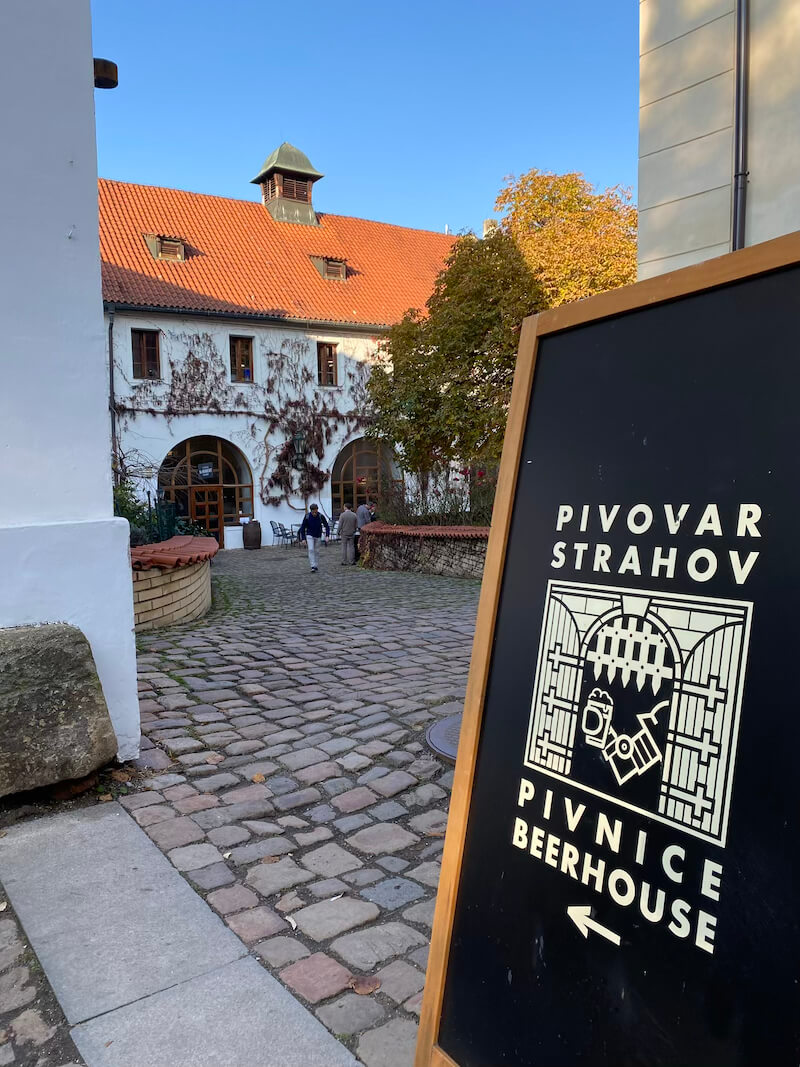- Home
- What to See in Prague
- Strahov Monastery
Strahov Monastery in Prague: Historic Library, Chapel & Views Above the City
Warning, Strahov Monastery is going to make you wish you had an extra day in Prague. I'm serious! This place is an absolute treasure trove of history, beauty and surprise. Oh, and it's got some of the best views of the city.
The monastery is perfect to pair with Prague Castle, but without all the crowds. Just a short walk away, you'll find it to be peaceful and full of little discoveries.
Even if you don’t step inside, the view alone is worth the walk. But honestly, the interiors are what make this spot unforgettable.
Strahov Monastery is home to one of the most beautiful libraries in the world. It's one of those amazing places that photos can never capture. Here goes anyways...

Do you believe me now?
And that's just one hall of the library. There's another room that's equally breathtaking.
Of course, the library gets a lot of attention, and for good reason. But there's much more to the monastery. Luckily it doesn't take long to visit the individual parts. Let's take a closer look with some historical context.
The Famous Strahov Library
Let’s start with the showstopper.
The Strahov Library is made up of two adjoining halls — the Theological Hall and the Philosophical Hall — both filled floor to ceiling with ornate wooden shelves, old globes, and over 40,000 volumes.
Visitors generally can’t walk inside (humidity and centuries-old frescoes don’t mix well), but even a peek from the doorway is magical.
You’ll also pass the Cabinet of Curiosities, an old-school collection with everything from stuffed animals to a Dodo bird fragment. It’s weird and wonderful. Kids will love it. And I suspect that even adults will be curious and a bit mesmerized.
If you're absolutely keen on entering the library, you can get special permission by contacting the Monastery directly. They do make guided exceptions for a fee.
Theological Hall
Built in 1679, this hall feels like a baroque daydream. The vaulted ceiling is covered in frescoes by Siard Nosecký, painted with the idea that wisdom begins with the fear of God — you’ll even see the Latin version of that phrase over the iron gate.
There are around 18,000 volumes here, most centered on theology and the Bible. Even from the doorway, the craftsmanship is jaw-dropping.
Philosophical Hall

Completed in 1797, the Philosophical Hall brings a different kind of grandeur. Its walnut interior was transported from another monastery, and the ceiling fresco — The Intellectual Progress of Mankind — ties religion and science together in one sweeping scene.
There’s even a hidden staircase disguised by fake book spines (because of course there is).
One fun fact: Napoleon’s wife, Marie Louise, visited here and loved it so much she later sent a four-volume set from the Louvre Museum as a gift.
Basilica of the Assumption of Our Lady
Step next door and you’ll find the Strahov Basilica, a church that’s been rebuilt more than once thanks to fires and bombardments.
Mozart once played the organ here in 1787 — yes, that Mozart.
The interior is stunning: vaulted ceilings, ten side altars, and frescoes celebrating the Virgin Mary. You can usually peek in when no service is taking place, but attending a mass is the best way to see it in full.
Daily service is at 18:00, and Sunday mass is at 10:00 (verify times before visiting).

Inside Strahov Monastery

There’s more to see beyond the library and basilica. The ground floor features Romanesque halls and two refectories — large dining halls where monks once shared meals.
The Summer Refectory is the star here, with a massive fresco stretching across the vaulted ceiling.
Upstairs, the Picture Gallery showcases religious art and sculptures from the monastery’s vast collection. Only a fraction of the works are displayed at once, but it’s well curated and peaceful to wander through.
Key Events in the Monastery's History
Strahov Monastery was founded back in 1143, making it one of the oldest Premonstratensian monasteries in the world. Over the centuries, it’s seen fires, wars, Communist confiscation, and revival — yet it still feels timeless.
Today, it’s home to monks, museums, and one of Prague’s most photographed libraries.
Here are some major historical markers from the monastery's past...
- Founded in 1143 - it's one of the oldest Premonstratensian orders in the world.
- The monastery, like many buildings in Prague, was subject to fire and eventually renovated in 1258.
- In 1420, the monastery temporarily shut down due to the war with the Hussites.
- The monastery was plundered by war and in decline until the 16th century.
- For 200 years, renovation and changes were brought to the monastery and the remains of St. Norbert, the founder of the Premonstratensian order, were brought to the Strahov Basilica.
- In 1679 the Theological Hall of the library was completed.
- In 1797 the Philosophical Hall of the library was completed.
- In the 1950s monastic orders and congregations were forbidden by Communist rule. Strahov monastery was essentially dismembered and left idle.
- After 1989, the monastery's buildings and property were returned.
Strahov Brewery & What’s Nearby
Just across the courtyard sits the Strahov Monastic Brewery, where monks once brewed beer back in the 14th century. The restaurant still serves hearty Czech food, and the beer is fresh and surprisingly affordable.
After your visit, stroll down through Petřín Hill — one of the prettiest green spaces in Prague. You’ll find the Petřín Lookout Tower (a mini Eiffel Tower), a House of Mirrors, and even a small observatory tucked among rose gardens.
It’s easy to combine Strahov with Loreto and Prague Castle for a full day of sights.

Quick Visit Tips
Recent Articles
-
Michelin Key Hotels in Prague: 2025 Winners - What's Your Favorite?
Nov 01, 25 04:16 PM
Michelin Key hotels in Prague were revealed for 2025. Discover 8 stunning stays awarded for comfort and unforgettable guest experiences. Which will you choose? -
Prague Star Palace: The Hidden Forest Retreat Locals Love
Oct 22, 25 03:25 PM
Step off the tourist trail and discover the Prague Star Palace. A six-pointed Renaissance gem surrounded by woods and trails, just outside the city center. -
Queen Anne’s Summer Palace: A Quiet Gem in Prague Castle Gardens
Jul 30, 25 12:08 PM
Is Queen Anne's Summer Palace the most beautiful building in Prague? Find out for yourself as you uncover its story, Renaissance architecture and peaceful garden.


